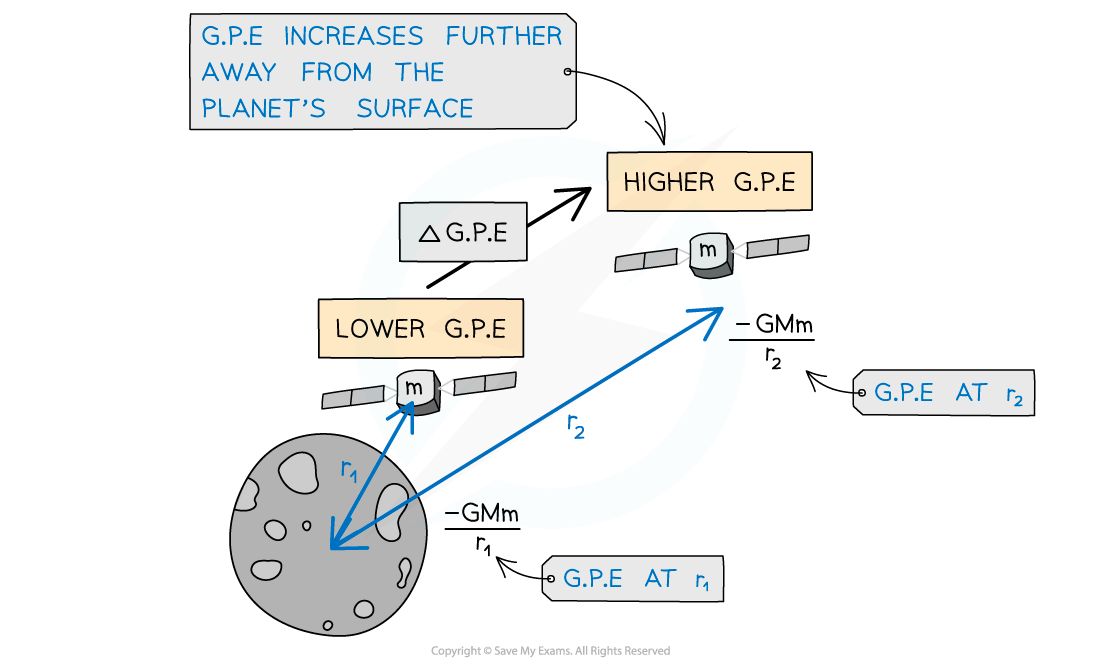Work Done on a Mass
- When a mass is moved against the force of gravity, work is required
- This is because gravity is attractive, therefore, energy is needed to work against this attractive force
- The work done in moving a mass m is given by:
- Where:
- ΔW = change in work done (J)
- m = mass (kg)
- ΔVg = change in gravitational potential (J kg−1)
Worked example
A particle of mass 50 g is moved vertically from point A to point B, as shown in the diagram.
Take the gravitational field strength to be 10 N kg−1.

Determine
Answer:
(a)
- The work done in moving a mass in a gravitational field is:
and
(close to the Earth's surface)
- Where the change in height is
= 35 − 10 = 25 m
- Therefore, the potential difference between A and B is:
(b)
- The work done in moving the mass from A to B is:



